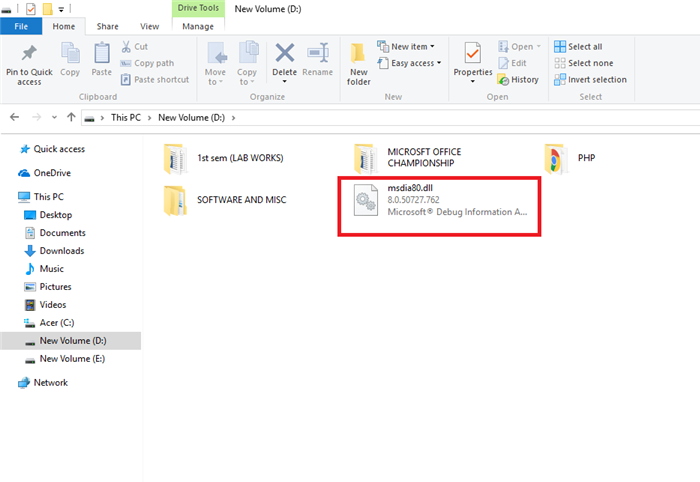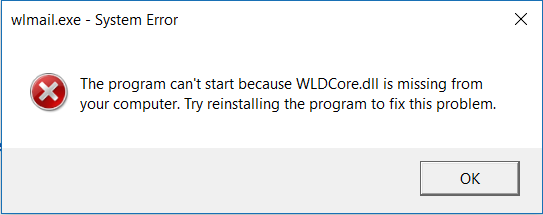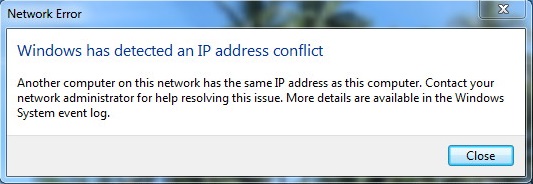The Windows operating system possesses many features and software applications compiled together at one place. Msdia80.dll allows the user to comprehend various tasks at merely one location. On top of that, the system also incorporates facilities to update system files from time to time.
Here, newly designed applications and new software applications get updated with the latest features allowing better functioning. All of this becomes possible with the introduction of programming languages.
Programming languages comprises a set of instructions which gets performed when the users use any particular features. These are like grammatical instructions incorporated inside a computer to perform various specific tasks.
One of the most popular Programming Languages is the C++, an extension of C Language. C++ includes several operators like comparison, arithmetic, and logical operators, which allows creating data types. User can use these data types multiple times.

Keeping that in mind, msdia80.dll is a system file in the Programming Language C++. The extension DLL stands for Dynamic-link library. DLL helps to smoothly perform various applications simultaneously in one computer without any hindrance. One should not delete DLL as some application might stop running as expected.
Read Also:
- Unexpected Store Exception
- Antimalware Service Executable
- Ethernet Doesn’t Have A Valid IP Configuration
Contents
Understanding Msdia80.dll:
Msdia80.dll is a DLL file that belongs to the Microsoft Debug Information Accessor library, part of the Microsoft Visual Studio 2005 redistributable package. This file contains functions and resources that allow developers to access debugging information for applications compiled with Visual Studio.
Purpose of Msdia80.dll:
The primary purpose of Msdia80.dll is to provide debugging support for software applications developed using Visual Studio 2005. When developers compile their code in Visual Studio, debug information is generated and stored in the program database (PDB) files.
Msdia80.dll facilitates the retrieval of this debug information, enabling developers to debug and analyze their applications effectively.
What Should You Do About The DLL File? Delete It?
As mentioned earlier, deleting DLL system files can hinder the smooth functioning of an application. It is essential to understand that DLL files are simple pieces of data code which are alive to allow the user to perform simultaneous functions.
In addition to this, the system file only gets utilized as and when its need arises. Now, if the msdia80.dll file is present in other drives, then you need to transfer it to the correct location only.
It will mostly let Windows know that the file resides at the target location, and the operating system can use it whenever necessary.
How to Fix Msdia80.dll Error
There are two possible solutions to resolve the flaw. Either you can simply transfer the file to the target location or install two Microsoft packages at the same time. Let us briefly look at both the solutions.
Method 1: Relocating The DLL File
Let us start with a simple and quick resolution of the displaced file. You need to relocate the msdia80.dll file from the root directory to default path, the VC folder to the drive along with the operating system. Perform the following steps for the same.
Step 1 – To begin with, go to the file in the present in the root directory. Press Windows Logo Key + E for the same.
Step 2 – File explorer will appear on the screen. Locate the file in the File Explorer and right-click on it. Now click on the ‘Cut‘ option.
Step 3 – Now, you need to go to the default location of the file to place it there. Navigate to the following path:
C:\Program Files (x86)\Common Files\microsoft shared\VC
Step 4 – When you reach the desired location on your computer, right-click on an empty area and select ‘paste.’
Step 5 – Allow the system to paste the file, thereby pressing ‘Continue.’
Step 6 – Simply pasting the file is not enough. Now, you need to register the file at the transferred location to let the operating system know about its existence. For this, you need to open the command prompt using the administrator mode. Press Windows Logo key + R at the same time. Type ‘cmd‘ in the address bar and press Control + Shift + Enter.
Step 7 – Lastly, execute the following command and press Enter:
regsvr32 driver:\Program Files\Common Files\Microsoft Shared\VC\msdia80.dll
That’s it. Once the process is complete, the system file will get registered in the operating system. Restart the computer so that the new settings can take effect and you are good to go.
Method 2: Install Microsoft Visual C++ Packages
The above-mentioned solution can be quite tedious. Instead of going through that entire trouble, one can try installing Microsoft Visual C++ Package in the device. For this, you need to install two packages.
The user should have administrative privileges to make changes in the device and internet connection to download the C++ packages. Execute the following steps for the same.
Step 1 – To begin with, open the browser and download search for “Microsoft Visual C++ 2005 Service Pack 1 Redistributable Package ATL Security Update” from Microsoft’s official website.
Step 2 – Before downloading, choose ‘vcredist_x86.exe‘ and ‘vcredist_x64.exe‘ from the checklist and download them to some desired location in your device. Now, install these exe files in your computer using administrator mode (Right-click on the icon and select ‘Run as administrator‘).
Step 3 – Once the installation process is complete, then locate “Microsoft Visual C++ 2005 Service Pack 1 Redistributable Package MFC Security Update” in the package.
Step 4 – From the extended portion, again select ‘vcredist_x86.exe‘ and ‘vcredist_x64.exe‘ from the list. Again, download them over to some desired location. Open the .exe files and install them on your device.
Step 5 – Finally, after installing the above packages, simply restart your computer so that the new changes can take effect and check if the Msdia80.dll problem persists or not.
How to Handle Msdia80.dll:
While deleting Msdia80.dll is not advisable, there are steps you can take to manage it effectively:
- Update Visual Studio: If you no longer use Visual Studio 2005 or have upgraded to a newer version, consider updating or uninstalling Visual Studio to remove dependencies on Msdia80.dll.
- Keep System Files Intact: Avoid deleting or modifying system files unless you are certain of their purpose and the potential consequences. System files play a crucial role in the operation and stability of your computer.
- Perform Regular Maintenance: Instead of deleting DLL files, focus on performing regular system maintenance, including disk cleanup, malware scans, and software updates, to keep your system running smoothly.
Frequently Asked Questions (FAQ) about Msdia80.dll:
1. What is Msdia80.dll? Msdia80.dll is a dynamic link library (DLL) file associated with Microsoft Visual Studio 2005, used for debugging purposes in software development.
2. What is the purpose of Msdia80.dll? The primary purpose of Msdia80.dll is to provide debugging support for applications developed with Visual Studio 2005. It allows developers to access debug information stored in program database (PDB) files.
3. Is it safe to delete Msdia80.dll? No, it is not safe to delete Msdia80.dll. Deleting this file can lead to malfunctions in Visual Studio or other software applications developed with Visual Studio 2005, hinder the debugging process, and potentially cause system instability.
4. How can I manage Msdia80.dll if I no longer use Visual Studio 2005? If you no longer use Visual Studio 2005, consider updating or uninstalling Visual Studio to remove dependencies on Msdia80.dll. However, avoid deleting the file manually, as it may lead to unintended consequences.
5. What should I do if I encounter errors related to Msdia80.dll? If you encounter errors related to Msdia80.dll, consider repairing or reinstalling Visual Studio 2005. Additionally, performing system maintenance tasks such as disk cleanup and malware scans may help resolve related issues.
Read Also:
Conclusion
Hopefully, the above two alternatives resolve the simple flaw in your device. In case, if none of the above solutions works, don’t panic. Just leave the DLL file the root directory itself. As mentioned above, DLL files are just used for orientation by the operating system.
Deleting the file might create some problems. So, simply leave the file, and you can continue to operate your computer without any harm.


